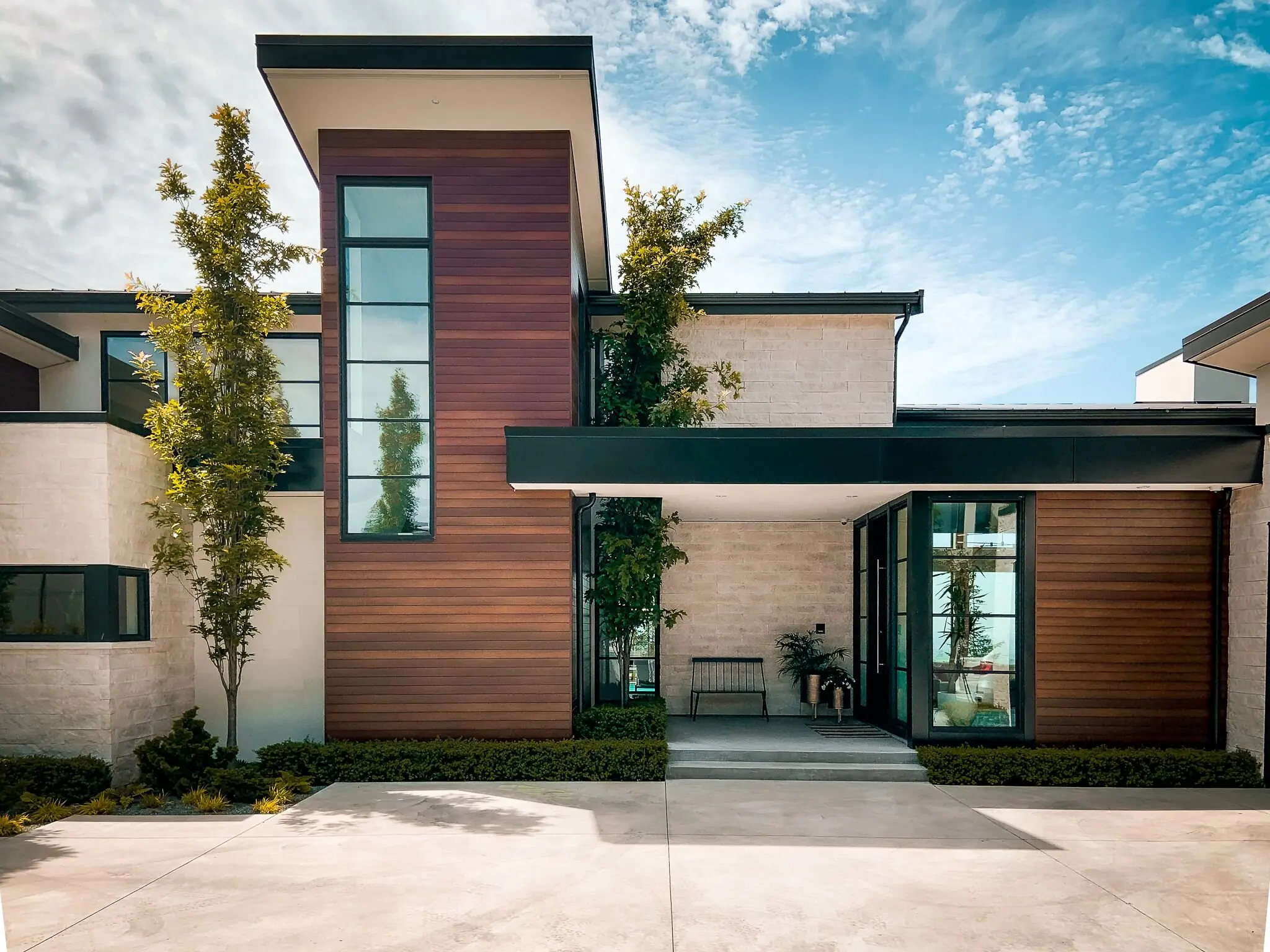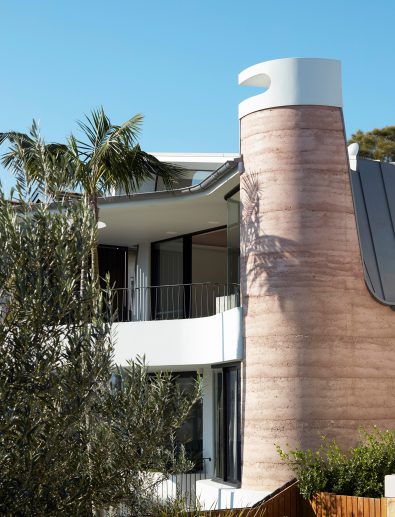Innovative Residential Interior Architect to Create Functional and Stylish Interiors
Innovative Residential Interior Architect to Create Functional and Stylish Interiors
Blog Article
Leading Patterns in Residential Style You Must Learn About
As property architecture remains to evolve, several engaging patterns are shaping the method we create and populate our home. Secret advancements such as sustainable building practices, the combination of clever home modern technology, and the increase of modular homes underscore a substantial change in the direction of both capability and ecological duty. Furthermore, ideas like open strategy living and biophilic layout are redefining our interaction with space and nature. Understanding these fads not only notifies style options however likewise discloses broader effects for lifestyle and community - residential house architect. What might these technologies suggest for the future of residential living?
Sustainable Building Practices
An enhancing variety of property projects are accepting sustainable structure practices, driven by an expanding understanding of ecological impact and power performance. This shift is defined by the assimilation of eco-friendly materials, energy-efficient layouts, and cutting-edge construction techniques. House owners and building contractors are increasingly focusing on using renewable energies, such as bamboo and recycled steels, which not only decrease the carbon footprint yet also enhance the durability and visual appeal of properties.
Including energy-efficient systems is another important element of sustainable building - residential house architect. Features such as high-performance insulation, energy-efficient home windows, and photovoltaic panels are coming to be requirement in brand-new residential designs. These elements not just add to reduced power consumption however also supply substantial long-term financial savings for house owners
Furthermore, the format of lasting homes frequently stresses natural light and air flow, decreasing the reliance on artificial illumination and environment control systems. Landscape design practices, such as xeriscaping, further promote sustainability by decreasing water usage.
As the need for lasting living services continues to rise, the household design sector is poised to adjust and innovate, making sure that future homes are not just eco accountable but practical and additionally comfortable for their owners. - residential house architect
Smart Home Innovation
Smart home innovation is changing the way property owners communicate with their living rooms, enhancing security, power, and benefit monitoring. This ingenious approach integrates various gadgets and systems, enabling individuals to regulate their homes from another location or with automated procedures. Central to this pattern is using wise devices such as thermostats, illumination, security electronic cameras, and home appliances, all linked by means of the Internet of Things (IoT)
One of the most attractive attributes of wise home innovation is the ability to customize settings for optimum power efficiency. House owners can check energy usage and change lights, home heating, and cooling based on their regimens, significantly minimizing energy costs. Additionally, innovative safety and security systems equipped with wise locks and security cameras provide comfort, enabling remote tracking and alerts to possible security violations.
Integration with voice-activated aides enhances individual experience, permitting house owners to manage devices with straightforward voice commands. As innovation continues to develop, the possibility for smart home systems to enhance high quality of life expands, making them a necessary consideration in modern-day domestic design. Inevitably, wise home technology is not just a trend but an essential shift towards a lot more intelligent living environments.
Open Concept Living
Open up idea living has actually emerged as a defining function in modern residential architecture, identified by the removal of typical obstacles between areas. This style ideology promotes fluidness and connection within the home, enabling for a smooth shift between locations such as the cooking area, eating, and living rooms. By getting rid of dividers and walls, open principle formats develop a sense of space, cultivating an inviting environment that enhances social interaction.

Moreover, this approach to domestic design aligns with minimalism, concentrating on useful simplicity and aesthetic comprehensibility. Homeowners appreciate the adaptability of these formats, which can be easily adapted to show personal style via furniture arrangement and decor. As open idea living remains to get traction, it stays a testimony to advancing family members characteristics and the need for homes that enhance connection and convenience.
Biophilic Design
Biophilic layout has actually come to be progressively substantial in residential style, highlighting the intrinsic connection in between human beings and nature. This style viewpoint looks for to integrate natural environments right into living spaces, consequently promoting a feeling of wellness and enhancing the high quality of life for occupants. By including functions such as natural light, vegetation, and organic materials, biophilic style advertises a harmonious partnership between indoor environments and the environment.
Crucial element of biophilic design consist of huge home windows that offer unobstructed views of outside landscapes, living walls that introduce plant into insides, and open flooring strategies that encourage airflow and all-natural light infiltration. Water features, both within and outside the home, serve to develop relaxing ambiences and boost sensory experiences.
In addition, using lasting products not only supports ecological stewardship but also adds to much healthier interior air high quality. As recognition of ecological problems boosts, house owners are significantly prioritizing styles that reflect their connection to nature. In essence, biophilic design not just boosts aesthetic allure however likewise addresses psychological and psychological requirements, making it a vital trend in modern household design.
Modular and Prefab Residences

Furthermore, modular and prefab homes are created with sustainability in mind. Many makers use energy-efficient systems and environmentally friendly materials, such as photovoltaic panels and advanced insulation methods, adding to lowered power consumption and reduced utility bills for house owners. The flexibility of design choices enables customization, dealing with varied visual preferences and functional demands.
As the need for affordable housing continues to rise, prefab and modular homes present a viable option, addressing both economic and ecological difficulties. Communities are increasingly recognizing the potential of these structures, integrating them right into metropolitan and rural setups. Generally, the pattern towards prefab and modular homes symbolizes a change towards more lasting, efficient, and adaptable living settings, making them an essential element of contemporary residential style.
Conclusion
Sustainable structure methods and wise home innovations improve performance and benefit, while open concept living and biophilic style foster social communication and a link to nature. The surge of modular and prefab homes supplies adjustable and economical services, mirroring a more comprehensive change towards functional and responsible living.
Key growths such as lasting building techniques, the assimilation of smart home innovation, and the rise of modular homes emphasize a considerable change in the direction of both functionality and environmental duty.The rise of prefab and modular homes has transformed the property style landscape, providing cutting-edge services for efficient and sustainable living.In addition, prefab and modular homes are created with sustainability in mind. On the whole, the trend towards modular and prefab homes indicates a shift towards a lot more lasting, reliable, and adaptable living settings, making them a critical element of modern residential architecture.
Sustainable structure practices and smart home modern technologies enhance effectiveness and comfort, while open principle living and biophilic style foster social communication residential architecture homes and a link to nature.
Report this page